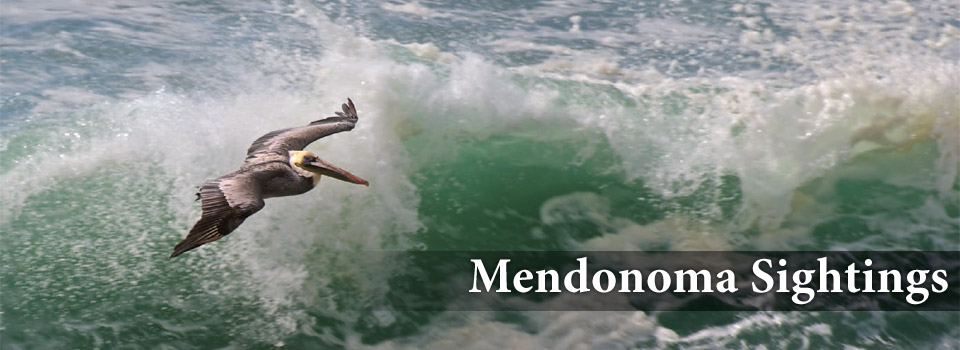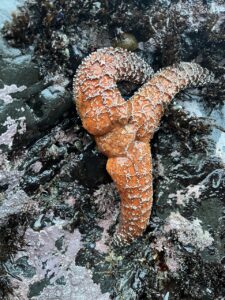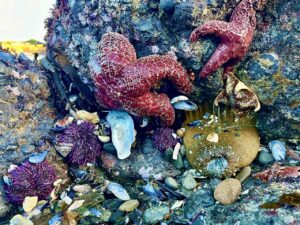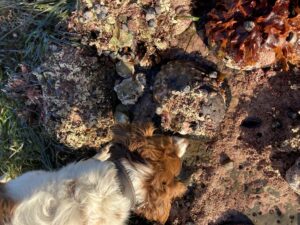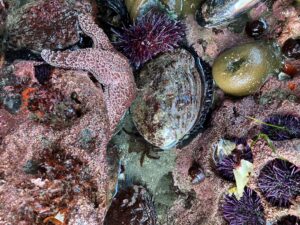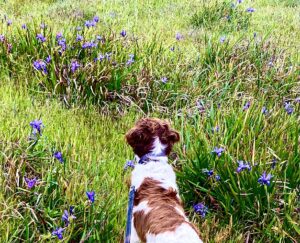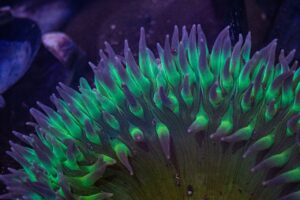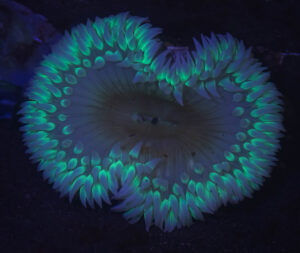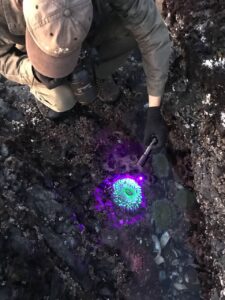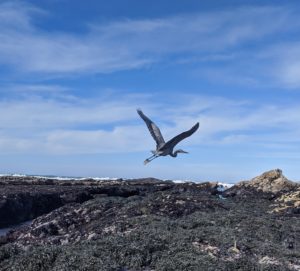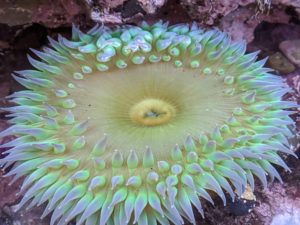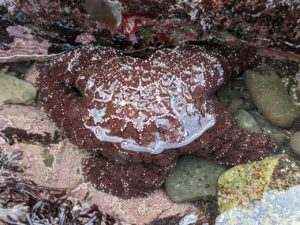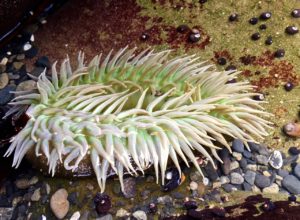Roxanne Holmes wrote, “This Sea Star is alive and seems to be doing okay despite missing a couple of ‘legs,’ or whatever they’re called. I check on it every low tide, and it changes position but continues to do well. Do Sea Stars thrive without all their limbs? What destroys or severs their limbs? Will the limbs grow back?”
Bob Van Syoc to the rescue. He looked at Roxanne’s photo and wrote, “Yes! Sea Stars can regenerate new arms as long as the center disc is intact. Some can lose all but one arm and survive to regrow the other four arms. In this state they are called ‘comets’ because of the smaller arms forming the star and the larger arm the ‘tail’ of the comet. Arms may be lost by injury (crushed by a rock) or by predators attacking them, though our Stars have few predators.”
Here's a photo Roxanne took of a happier sight - two Ochre Stars (yes, they come in different colors!), a Bat Star, Sea Anemone, and several Purple Urchins and more. A kaleidoscope of colors!
Thanks to Roxanne for allowing me to share her photos with you here.
Cool, breezy with dark clouds now and then. More weather headed our way in a couple of days.
